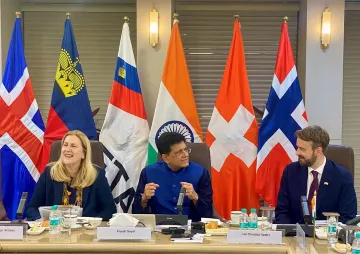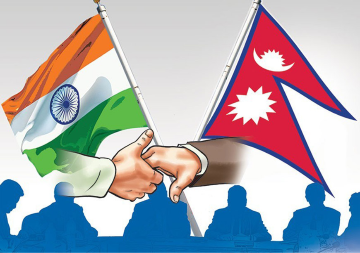The Bay of Bengal region is more than a channel for commerce — it has become an arena for power projection.

The idea behind this conference is to subject the different aspects of the project to a scrutiny by stakeholders and experts before launching on the field work — this was how the inception workshop on ‘India’s Maritime Connectivity and Importance of the Bay of Bengal — Phase II’ was positioned at the inaugural session at ORF Kolkata on 7 August 2018. Contradictory signals from the Trump administration regarding US engagement in the Indo-Pacific coupled with China’s increasing interest in the region has made the Bay of Bengal a critical maritime space setting the context of the present project.
In recent years, the Bay of Bengal has become more than a channel for commerce — it has also become an arena for the projection of power. The importance of maritime connectivity has also been highlighted in several regional initiatives. Consequently, there has emerged a number of aspects that call for concerted action by littorals.
The first business session on port logistics focused on strengthening trade connectivity. The session came alive with an exchange of ideas on the present port infrastructure, efficiency and connectivity that currently exist along India’s east coast. Trade across the Bay between the littorals remains limited, accounting for less than two percent of the world trade and an estimate of trade transactions revealed that the amount of imports from Southeast Asian countries to India is higher than the country’s exports to these states. As for port logistics, port utilisation needs to be improved around the Bay which may be achieved by reducing the congestion near ports and creating free storage spaces for cargo. Although the overall port infrastructure along India’s east coast is improving, a harmonious and profitable relationship has to be cultivated between these ports and their customers to better their marketability in the face of growing competition among ports.
The Krishnapatnam port was cited as a potential transhipment port as it attracts a lot of cargo because of favourable policies of the port authorities. Some private ports on India’s east coast like Kattupalli, Krishnapatnam and Ennore, among others, are showing a lot of promise with deep water channels, improved connectivity and good work culture. Though relaxation of protective measures such as cabotage laws are necessary, India must also focus on developing its own coastal tonnage through increased investments, improving the logistics of the last mile connectivity to the ports and easing custom barriers. As regards the development of the Andaman and Nicobar Islands into a transhipment port is concerned, its commercial viability has to be further strengthened before any such venture is attempted.
Business session II focused on the blue economy and Humanitarian Assistance and Disaster Response (HADR) aspects of the Bay of Bengal. Blue economy is an economy based on environmentally sustainable use of ocean and its resources for inclusive social development. It was highlighted that we are at the end of the ‘Ocean Cornucopia Dream’ due to unsustainable extraction of marine resources, unsustainable fishing, physical alterations and destruction of marine and coastal habitats and landscapes, marine pollution, impact of climate change and unfair trade. The economic potential of blue economy comprises of food, energy, transportation, mineral and water resources, leisure and health.
There needs to be a legal framework for blue economy involving collaboration among international agencies such as UNCLOS, United Nations Conference on Environment and Development (UNCED), United Nations Conference on Straddling Fish Stocks and Highly Migratory Fish Stocks, and so on. Cooperation among regional organisations such as IORA, ASEAN, BIMSTEC, IOC, Bengal Large Marine Ecosystem is also required. Some of the key challenges in the development of blue economy are lack of specific mechanisms for implementation, insufficient resources for development and enforcement, fragmentation of legal and regulatory frameworks at the regional, national, and international levels.
While maritime stability is the prerequisite for blue economy, it must be remembered that the Bay of Bengal is a domain of high risk natural disasters. Hence, the issue of HADR assumes importance. HADR is a post-disaster task which includes rehabilitation of victims and reconstruction. Following the 2004 tsunami, regional littorals have institutionalized HADR programmes and the Indian National Centre for Ocean Information Services (INCOIS) has emerged as the key platform of intraregional HADR cooperation. Nevertheless, there remains a lot of room for building HADR capabilities and for forging regional cooperation for greater confidence building measures and creation of regional SOPs.
The final session of the workshop was on ‘Strategic Convergences, Divergences and the Bay.’ It pointed out India’s geopolitical challenge of striking a balance between land and the maritime space. There are geo-economic and non-geo-economics goals that impact on making viable choices. It was argued that China-initiated Belt and Road Initiative (BRI) represented an extractive model of connectivity. The point was made that the Strait of Lombok and the Strait of Malacca were areas of strategic importance to China but also having important implications for India as well.
The strategic importance which Sri Lanka has assumed of late is because of the intensity of Chinese investments there. It was noted that Indian investments might not be along Chinese models but they were capability based which would help India to identify its own role in the region. Other strategically significant areas mentioned in the session included digital connectivity, climate change and its implications, the importance of Ro-Ro shipping, data sharing and collaboration among institutions.
This report was compiled by Pratnashree Basu, Associate Fellow, with Sreeparna Banerjee, Research Assistant; Jaya Thakur, Junior Fellow; Sohini Bose, Research Assistant and Sohini Nayak, Research Assistant, Observer Research Foundation, Kolkata.
The views expressed above belong to the author(s). ORF research and analyses now available on Telegram! Click here to access our curated content — blogs, longforms and interviews.




 PREV
PREV

